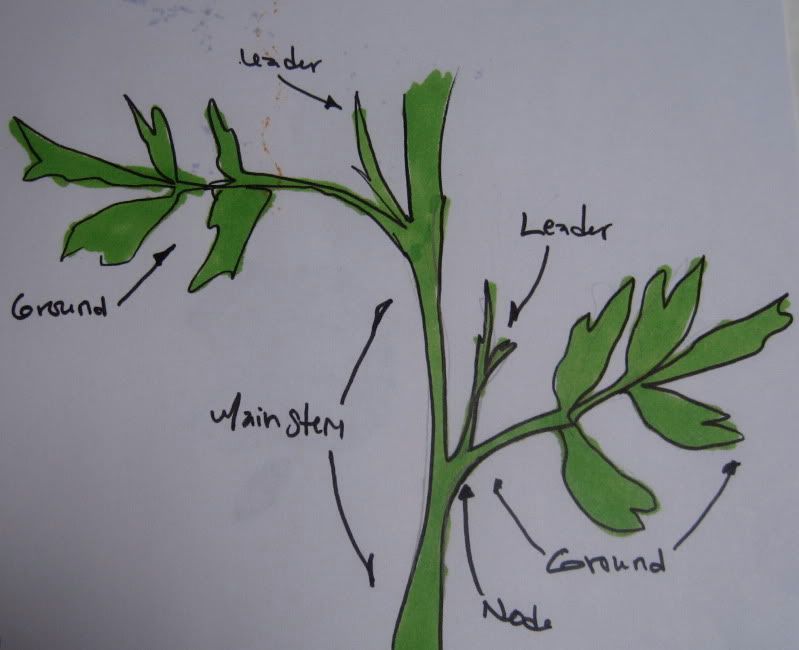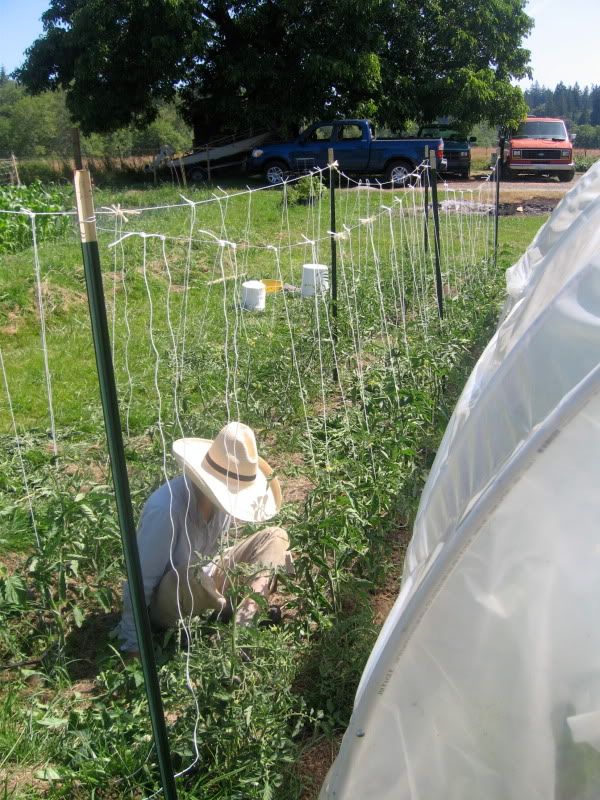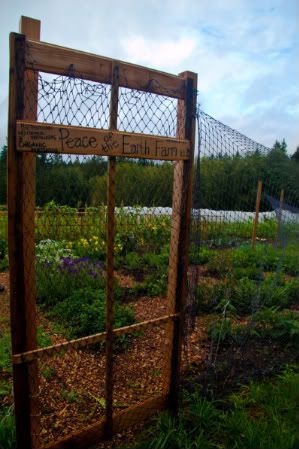When pruning a plant you may have to give yourself a pep talk before you begin. You might be worried you'll cut too much or cut the wrong thing. Tomatoes are pretty good at recovering if you cut too much or cut in the wrong place and secondly, most people actually cut too little when pruning. You may find it difficult to bring to yourself to cut large portions of the plant but try and remember that this will help the plant thrive. We prune because it helps focus the plant so it can get to the business of making the fruit as big and delicious as possible. If we don't prune, the plant will keep setting out as much leafy growth and fruit as possible....you'll get more growth and more fruit, but the flavor and size of the tomatoes will not be as desirable. Furthermore, your plant will be more susceptible to disease if your don't prune because of overcrowding of the leaves. Pruning gets the leaves and fruit up off the soil, and promotes better air circulation, both of which can help against disease.
Begin by first understanding the tomato plant's anatomy. In it's most basic state you have three main parts: the stem, the ground and the leader. The ground comes out of the main stem and the leader is right above the ground (figure 1).
Figure 1 (remember to clock on the photo for the full image)

Once you understand the anatomy it is now time to do some cutting. I like to start by cleaning house. The first thing I do is cut all the suckers that start to sprout at the base of the plant. Next cut the grounds and leaders toward the bottom of the plant. You don't want a single leave touching the soil. You may need to cut off leaves as far up as 12 inches up the stem. When pruning with this method it is recommended to prune the plant down to two leaders. While you are doing these initial cuttings start trying to determine where the primary leader is, and which leader you will choose for the secondary leader (figure 2). I usually choose a leader that is fairly hardy, one that already has fruit or flowers forming, and one that is about 12 to 18 inches from the soil. I like to mentally choose a few potential candidates for the secondary leader and hold off on cutting those until I know for sure which one I'll leave. Most of the leaders will be fairly small and can easily be pinched off with your fingers, others might need a snip from some siccors.
Figure 2 (remember to click on the photo for the full image)

Of course it's usually never as perfect as figure 2 but you might be surprised at how similar your plant may look to figure 2 after you're done cutting back all the leaders.
Now it's is time to trellis the tomato plant. We use a string method. Most people try to prop the plant up using stakes or cages in an effort to combat the plants desire to follow the laws of gravity. In my opinion this is a fool hardy goal as gravity will always win and you will create a lot more work for yourself as the tomatoes get bigger and heavier. Many people are very attached to their stakes and cages and refuse to give them up, however, I implore you to try out the string method because most people find it requires a lot less maitence as the season goes on.
First drive large posts (at least 6 feet) into the ground at both end of your tomato row. Then string either wire or hardy bailing twine from one post to the other (see photo below). Then hang two pieces of bailing twine down for each tomato plant. Tie both strings to the bottom of the plant and then gently guide the plant around the strings. When you get the point when your primary leader goes one way and your secondary leader goes the other, guide one string with the primary leader and one string to the secondary leader (figure 2). Make sure the strings are fairly taught so the plant is held up. This method uses gravity to it's advantage because the plants just hang there comfortable. The tomato plant might need a little help around the twine as it grows larger, but this maintenance is fairly easy and only takes a few seconds on each plant. While you do this maintenance you should also take a few seconds to pinch off any leaders that may have started to grow since you pruned.

One more note about pruning: Sometimes people will leave more than two leaders early in the fruiting season. This is because you can let these additional leaders fruit once before you prune them off. It just depends on how much maintenance you want to put into the plant and how much fruit you need to get off of it. Good luck and happy trellising and pruning!

I'm very interested in trying this trellising method this year. It just seems to much more efficient than messing with cages and stakes. It seems like the harvesting will be much easier as well.
ReplyDeleteDo you ever have problems with the wind? Oklahoma can be so windy and I want to be sure that the string will be strong enough to support the plants. I'd hate to have them all snap in half mid-season.
Megan